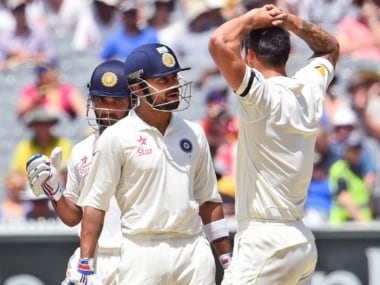
Discovering India: 7 Key Insights into a Global Giant
)
Source: firstpost.com
India—a land of vibrant colors, ancient tales, and a bustling future. This diverse nation is a fascinating mix of old traditions and new developments. Its story, filled with incredible achievements, provides valuable lessons. Let's explore seven key aspects of this extraordinary country.
1. A Journey Through India's Rich History
India's history is long and impressive. Think about the Indus Valley Civilization, one of the oldest in the world. Different powerful kingdoms ruled India for a very long time. The Mughal Empire left behind stunning monuments. The British Raj, while it had a major influence, finally ended and India gained freedom. Today, India is a democratic country with a strong heritage. It shows the world how cultures have grown over the centuries.
2. Exploring India's Majestic Landscape
India's geography is diverse. Imagine towering Himalayan peaks, lush green valleys, and the fertile Gangetic Plain. The coastlines are long and beautiful. Several major rivers – Ganga, Indus, and Brahmaputra – play a significant role in people’s lives and economy. India’s land and natural resources have shaped its development in numerous ways.
3. Navigating India's Diverse Climate
India's climate varies greatly, mostly due to its big size. Hot, humid summers are very common. Then comes the monsoon season bringing heavy rains during certain months. After this comes a dry autumn, while winters can get cool, particularly in the north. This creates a specific ecosystem supporting many kinds of plant and animal life. Understanding India’s weather helps understanding how its agriculture and overall life are structured.
4. Understanding India's Political System
India has a parliamentary system of democracy. The President is the head of state, while the Prime Minister runs the country. They have a Parliament, divided into two houses. Different political parties have different views and roles, making decisions for the whole country and people’s everyday lives. This system shows the different ideas that come together in a single large and complicated system.
5. The Tapestry of Religions in India
India has many religions. About 80% of the people are Hindu, but a large portion follows other faiths. This includes Islam, Christianity, Sikhism, Buddhism, and Jainism. It is important to understand that many people practice traditions. They each play a large part in daily life.
6. India's Economic Powerhouse
India is the fifth-largest economy in the world. Its economy is a very important part of the country’s growth. Several sectors are important, like services, manufacturing, and technology. They're continuously working on developing better infrastructure. The government is always focused on economic growth and development of industries that employ many people. The success story is important, because India is now an integral part of global business.
7. Industries Driving India's Growth
Many significant industries power India's growth, contributing to its progress and future. These industries range from agriculture, which remains a substantial portion of their overall economy, to manufacturing. Technology is another large and powerful factor in their continued progress, influencing industries around the world and employment. Understanding the strengths of each sector and industry is important in understanding the growth strategy and its successes.
In summary, India presents a powerful and compelling blend of history, culture, and economic potential. From its majestic landscapes to its vibrant population and diversity of ideas, this country stands out on a global level, shaping and being influenced by international trends.
India's Cultural and Economic Landscape

Source: slidesharecdn.com
India's rich cultural tapestry is woven from threads of diverse beliefs and traditions. Its economic growth shows strong progress in recent decades. Understanding the factors that influence this journey provides important insight into the complex realities of the nation.
1. India: Where Faiths Converge
India is a land of many religions. Hinduism is the most popular. Islam, Christianity, Sikhism, and other religions also exist. This creates a unique cultural melting pot. Many people follow multiple customs and beliefs. The variety enriches the culture and society.
2. The Economic Engine of India
India’s economy is powerful, driving forward many parts of the nation. Services, agriculture, manufacturing, and technology play important roles in this engine of economic growth. This rapid growth has made India significant in global business, attracting both investment and skilled workers.
3. Key Industries Shaping India's Future
Agriculture is a key part of the Indian economy. Technology has grown rapidly. Manufacturing is still very active and employs many people. Pharmaceuticals have a vital part, along with developing international business relationships. All these parts contribute strongly to its overall development, from farmers’ livelihoods to workers in many other industries.
4. Challenges and Opportunities in India
India, though growing economically, has issues with poverty and unemployment. Some parts need better healthcare and education. Environmental concerns, such as pollution, impact all of India. This highlights challenges India faces, yet its growth presents an excellent opportunity for innovation and improvement, while encouraging economic diversification.

Source: studyx.ai
5. India's Education System: A Path to Progress
India has a system of formal and non-formal education. People want more learning, wanting better skills for their future jobs. Many study various trades or professions. This progress gives people a better life, and is good for the nation as a whole. It demonstrates the government and population’s vision for improving people’s lives.
6. Unveiling India's Tourist Treasures

Source: sortingtax.com
India attracts many visitors every year. Many people like the stunning historic monuments, scenic beauty, and its varied culture. This brings in much-needed tourism revenue and shows off how incredible India's treasures are. This important income can improve local economies.
In summary, India's economic progress has shaped and influenced its unique culture in significant ways. While challenges remain, this beautiful country continuously shows how a nation with varied religious and cultural heritage, an industrious society, and an expanding educational system can work together, striving toward improvement.
Top 5 Must-See Destinations in India
India beckons with stunning attractions for visitors, offering diverse experiences. From historical landmarks to natural beauty, India's destinations have something for everyone. Let's discover five places worth exploring.
1. Taj Mahal: A Timeless Monument of Love

Source: pinimg.com
The Taj Mahal, a famous monument, is a symbol of love. It's an amazing structure of marble. People visit from all over the world to see its beauty. Its stunning architecture stands tall in India. Its beauty draws lots of travelers to this place.
2. Golden Temple: A Spiritual Oasis
The Golden Temple is a sacred place for Sikhs. Many go there for prayer and meditation. The beautiful golden building and peaceful atmosphere attracts people of many faiths and nationalities. People who enjoy tranquility can appreciate its spiritual ambiance. This temple holds significant importance for Sikhs, promoting their traditions, practices and customs.
3. Himalayan Hill Stations: Serenity Amidst Nature
The Himalayan hill stations offer peace. They’re surrounded by high mountains, valleys, and natural beauty. People appreciate fresh air and relaxation in peaceful, calming environments. They offer views that are often praised as magnificent by tourists, drawing in travelers for scenic escape.
4. Delhi: A Blend of History and Modernity
Delhi is a major city. It combines old buildings and historical monuments with new businesses and areas of advancement. People enjoy bustling marketplaces and modern structures alongside ancient palaces and impressive sites. It showcases India’s rich heritage and fast-paced urban lifestyle. Visitors get an impression of India’s impressive progress in modernization.
5. Goa: Coastal Charm and Relaxation
Goa offers a different kind of experience. Its beautiful beaches attract people who want to relax. Goa also has various cultural attractions for people interested in exploration. Goa's coastal region presents a blend of natural beauty and vibrant local traditions and modern conveniences.
In summary, these five destinations highlight the rich and diverse cultural appeal of India. Whether you're drawn to architectural grandeur, spiritual solace, natural beauty, or the energy of a bustling city, India has many fantastic places for travelers. Exploring these diverse locations reveals a rich tapestry of cultural and natural heritage.
7 Interesting Facts About India's Geography and Climate
India's landscape is a captivating mix of towering mountains, fertile plains, and a long coastline. Understanding its geography helps us understand the diverse climate. This diverse geography and climate influences how people live and work across India.
1. Himalayan Majesty
The Himalayas are a breathtaking mountain range. They are a vital part of India's geography and climate. The range affects weather patterns and provides fresh water to many rivers and regions. The high altitudes of the mountains play a crucial role in defining many of the country's landscapes.
2. The Gangetic Lifeline
The Gangetic Plain is fertile land. Major rivers, like the Ganges, run through this plain, making it excellent for farming. This plain provides resources for people’s everyday lives. It significantly supports large numbers of people and helps contribute to a significant percentage of India's agricultural output.
3. Coastal Splendor
India has a long coastline. The Arabian Sea and Bay of Bengal provide many opportunities for fishing and trade. Coastal areas are important parts of Indian cities and economy. This is important for transportation, fishing, and tourism industries.
4. Monsoonal Rhythms
The monsoon season brings vital rainfall to much of India. Heavy rain occurs during certain months. The monsoon significantly impacts agricultural output, a critical part of the nation's economy and people's livelihood. It affects many different elements of the lives of people who live in areas where it falls frequently.
5. Diverse Topography
India's geography varies. There are high mountains and plains. There are dry and wet regions. This diverse topography creates a range of ecosystems supporting diverse plant and animal life. The combination of high and low altitude locations create ecosystems containing different and important aspects of nature.
6. A Land of Rivers
India has several important rivers. They provide water for drinking, irrigation, and transportation. Many important towns and cities have developed near these bodies of water, helping to shape the lives of people who reside along or near the many water systems.
7. Four Distinct Seasons
India has four seasons: hot summers, monsoons, cool autumns, and cool winters. The climate variations shape India's agricultural and daily life in profound ways. Understanding this is key for predicting rainfall, crop yields and shaping various important aspects of the economy.
In conclusion, India’s diverse geographical landscape and its various climates have significantly shaped India's culture, society and economy. Its varying topographies impact the different ways of life across its regions. Understanding India’s unique geographic character provides deeper appreciation of this complex nation.
Exploring India's Diverse Culture and Heritage
India's cultural richness is a fascinating mix of beliefs, languages, and traditions. This diverse blend shapes everyday life and creates a unique and vibrant cultural experience. Its historical significance contributes to a unique way of life.
1. A Fusion of Faiths
India has a variety of religions. Hinduism is the most popular, but many people also follow Islam, Christianity, Sikhism, and other beliefs. The combination of these beliefs makes India unique. Respect and understanding are vital for coexistence in such a mixed environment. This diverse range of faiths creates a vibrant tapestry of traditions and practices that coexist.
2. Language of Diversity
India has many languages. People speak a wide variety of languages, each with its own culture and stories. This shows how various regions of India retain strong and distinct identities. The diversity of languages adds to the rich cultural mosaic of the country.
3. Culinary Delights
Indian food is varied. Different regions have unique dishes. Food often reflects regional traditions and available resources. The delicious and wide-ranging range of foods is a big draw for visitors.
4. Artistic Expressions
India has many artistic forms. Paintings, sculptures, music, and dance reflect unique styles. These art forms demonstrate the region’s deep-rooted heritage and innovation, creating many traditions. Art is important for expression.
5. Festive Celebrations
Indians have numerous festivals. These celebrations often mark significant occasions or religious events. Festivals bring people together to share happiness. Traditions often revolve around seasonal changes or religious occasions. People of many regions celebrate together with strong devotion.
6. Ancient Traditions
India has a long history. Ancient customs and beliefs influence daily life in many areas. Many old rituals are still practised by the Indian people. Cultural values often guide people's daily behaviours. The blend of older and new creates rich tradition that is often preserved and revered by the people of India.
In summary, India's diverse cultural heritage is a testament to its rich past. The many religions, languages, and artistic expressions paint a vivid picture of the country's soul. Its many cultural practices create an incredibly vibrant environment and reflect India’s proud history.
Key Questions on India: FAQs and Further Exploration

Source: ytimg.com
Understanding India involves knowing basic facts. Knowing these facts helps build a clearer picture of this complex nation. Let's look at some important questions.
1. What is India's official name?
India's official name is the Republic of India. This is the name used for the country's government and administration. The name clearly identifies India as a republic with its unique system of governance.
2. What is the population of India?

Source: z-dn.net
India has a massive population. It is over 1.3 billion people. That's a huge number, making India one of the most populous countries in the world. It signifies the large number of people involved in different activities within India, such as business, education, or tourism. This size shapes how people live their lives, contributing significantly to India’s overall economic output.
3. What are the major religions of India?
India is home to numerous faiths. Hinduism is the most significant one, practised by the majority of people in India. Other important religions are Islam, Christianity, Sikhism, Buddhism, and Jainism, amongst others. This shows India's unique multicultural fabric, recognizing the presence and impact of many different cultures, religious ideas, beliefs and values. This rich diversity makes for interesting social interactions and contributes in creating a unique and interesting Indian way of life.
4. What type of government does India have?
India has a democratic government. It's a parliamentary system. Citizens choose representatives to make decisions. India operates with elected representatives across different regions to develop a national vision and create efficient policies that support the entire population.
5. Where is India located?
India is in South Asia. It borders several countries. Its location is very significant for trade and relations with neighboring countries. It's part of a large geographic region, with ties to both the past and future on the world stage. The location and proximity to other countries has historically shaped India's economic activity, influencing the political landscape.
In summary, understanding these key facts provides a foundation for comprehending India. From its enormous population to its democratic systems and significant cultural diversities, these fundamental details paint a clear image of the country's vastness and complex societal fabric.



